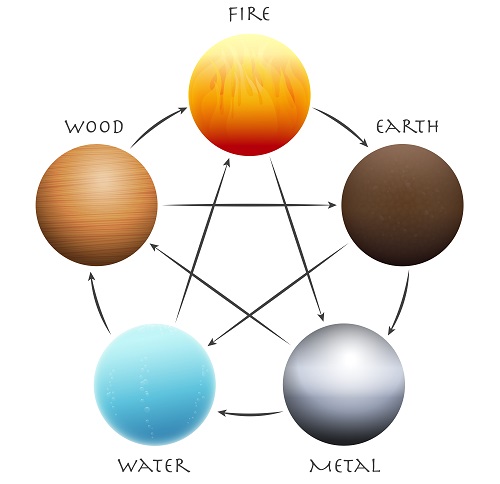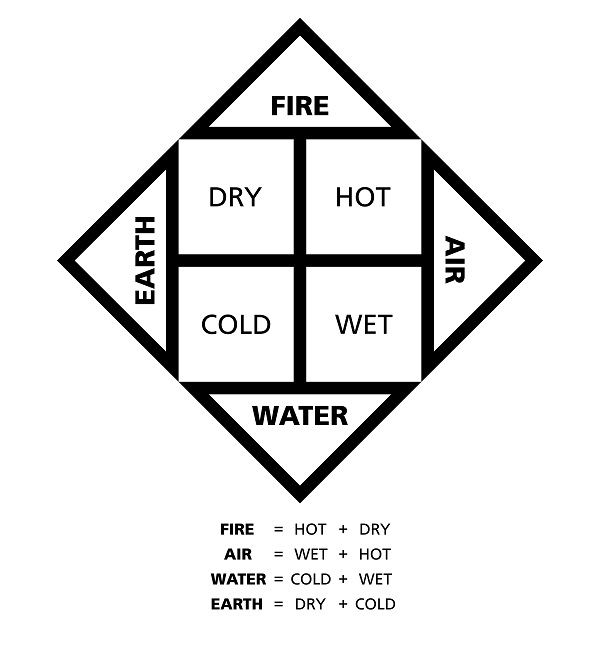Herbalism is an ancient form of healing that while rooted in early human history, has different forms in different cultures and civilizations. Being practiced in almost all schools of medicine, including both eastern and western medicine, it is no surprise that herbalism is imbued with a wide variety of concepts such as herbal energetics and the Four Elements.
Herbal energetics is a system where-in certain herbs correspond to certain universal forces such as the Four Elements. Originating in Ancient Greece, the Four Elements is a concept that describes air, water, earth, and fire are the basis of everything – including human health. As disease could be thought of as an imbalance in these four elements, herbal remedies that correspond to a certain element can then be recommended to guide the afflicted back to a state of equilibrium.
Herbalism

Herbalism or herbal medicine, is the ancient art and science of using medicinal plants for treating disease. Herbalism is one of the earliest forms of medicine, with archaeological evidence suggesting that Neanderthals had knowledge of which plants had medicinal properties. Historically, herbalism was a main proponent in early schools of medicine throughout different cultures and civilizations and was a significant component in both traditional medicine (e.g., traditional Chinese medicine, Ayurveda, etc.) and conventional medicine.
Herbalists (practitioners of herbalism) are trained professionals who have extensive knowledge in a wide array of subjects including human sciences (e.g., anatomy, physiology, biochemistry, etc.), botany, pharmacy, etc. Herbalists consult with clients, assess symptoms, recommend herbal remedies, sell herbal products, grow medicinal plants, and teach herbalism to other people.
Despite having such early roots, herbalism remains a prominent part of health today. The World Health Organization reports that 80% of the global population practices herbalism in one way or another. Even with conventional drugs, it was reported that 74% of the top 150 prescription drugs in the United States are sourced from plants.
There are numerous reasons why people would opt to approach health through herbalism. A 2018 paper published in BMC Complementary Medicine and Therapies investigated why people use herbal medicine. The study found that people who opt for herbal medicine are those who are dissatisfied with conventional treatment, had good experiences with herbal medicine, or simply following family traditions.
Having been practiced in almost all schools of medicine developed throughout history, herbalism has adapated numerous concepts and philosophies such as herbal energetics and the Four Elements.
Energetics
One thing that distinguishes traditional medicine and conventional medicine is the concept of energetics. While conventional medicine is described as a materialistic or tangible interpretation of health, traditional medicine encompasses a form of life energy or vital force. Energetics are systems used to describe this intangible connection between numerous internal and external factors, making health holistic.
Different schools of medicine have their own forms of energetics. Traditional Chinese medicine believes in five elements: water, fire, metal, earth, and wood. Each of these elements then correlates to certain specific bodily organs (i.e., wood correlates to the liver, gallbladder, tendons, and eyes; fire correlates to the heart and tongue; earth correlates to the spleen, stomach, mouth, and muscles; metal correlates to the lungs, nose, and skin; water correlates to the kidneys, ears, and bones), emotions, colors, and so on.

Each element in the five elements of traditional Chinese medicine also has relationships with one another. For example, while wood promotes fire, it also controls earth. Fire promotes earth and controls metal. Earth promotes metal and controls water. Water promotes wood and controls fire. Metal promotes water and controls wood.
Other systems of energetics include the Ayurveda and its own five elements: air, water, earth, fire, and ether. Even the Greek physician Hippocrates, considered to be the father of western medicine, also established a system of energetics he called the four bodily humors: bile, phlegm, black bile, and yellow bile.
While the energetics system created by Hippocrates was a movement away from the supernatural and increasingly scientific, the four bodily humors were still essentially an energetics system as each element represented specific characteristics, emotions, personalities, etc.
Herbal Energetics
A hallmark of energetics is how each force or element corresponds to certain factors, like how the Five Elements in traditional Chinese medicine correspond to different organs in the body. They also correspond to specific colors, characters, seasons, tissues, senses, emotions, and tastes.
Herbal energetics is then the association of herbs and plants to specific forces in an energetics system. Used in herbalism, herbal energetics is then the use of specific herbs that correspond to a certain force or element to treat someone with an energetics imbalance.
An example of herbal energetics would be how herbs are utilized in the Four Elements.
The Four Elements
Originating in ancient Greece, the Four Elements is an energetics system that is comprised of elements the ancient Greeks found around them: fire, water, air, earth. According to the Four Elements, everything in the universe, both living and non-living, are all made up of these four elements. Not only is everything made up of these four elements, but these elements have certain characteristics and relationships to one another.
Just like other energetics systems developed in other cultures, the Four Elements all have specific counterparts. For one, each element has a corresponding phase of matter: earth is solid, water is liquid, air is gas, and fire is plasma. Each element also corresponds to a specific temperament: earth is melancholic (sad), water is phlegmatic (calm), air is sanguine (happy), and fire is choleric (irritable).
The Four Elements also have corresponding seasons: earth is winter, water is autumn, air is spring, and fire is summer. The Four Elements even have color associations and symbolism, but this varies greatly from different sources.
Even Greek philosopher Plato hypothesized that each element was made up of a specific shape: earth is a cube, water is an icosahedron, air is an octahedron, and fire is a tetrahedron. These are regular convex polyhedrons that were eventually named after Plato himself – the platonic solids.
When Hippocrates created his own energetics system, each bodily humor still corresponded with the Four Elements: earth is black bile, water is phlegm, air is blood, and fire is yellow bile.
Decades later, Plato’s own disciple Aristotle postulated that the Four Elements were not the basis of the world. Instead, he hypothesized that the Four Elements themselves were derivative of what he called the Four Qualities: hot, cold, damp, and dry. Aristotle suggests that the Four Qualities precede and makeup the Four Elements: fire is hot and dry, air is hot and moist, water is moist and cold, and earth is dry and cold.

As mentioned, herbalism is a holistic approach to medicine and the energetics systems are a way to connect the internal state of the body to the external environment. Just as certain colors and shapes correspond to the Four Elements in a certain way, so do certain tastes. This is where the Four Elements begin to be integrated into herbalism itself.
Given how herbs and plants are diverse in shape, color, taste, and growing season, each of them corresponds to the Four Elements in a certain way. Numerous texts have already provided lists of herbs with their corresponding element.
For example, plants that fall under earth are mugwort, fern, magnolia, cypress, narcissus, primrose, and honeysuckle. Plants that fall under water are camphor, cherry, chamomile, gardenia, iris, lily, orchid, peach, jasmine, lotus, and vanilla. Plants that fall under air are acacia, star anise, bergamot, peppermint, lavender, almond, parsley, and lemongrass. Plants that fall under fire are basil, allspice, garlic, cinnamon, fennel, bay, lime, tobacco, orange, and rosemary.
Since traditional medicine often utilized the concepts of excess and deficiencies in energetics as a way to explain various states of health, herbs corresponding to a specific element would then be recommended as a remedy as it should help balance the different opposing forces.
In William Salmon’s 1709 text, English Herbal, he lists different plants and their corresponding qualities (following Aristotle’s Four Qualities). A herbalist would then assess what quality a patient is in excess or deficit of. Some examples would include nettle and mugwort are hot and dry, Madonna Lily is hot and moist, rose and plantains are cold and dry, watermelon and wild lettuce are cold and moist, and so on.
Final Thoughts
While currently assigned to alternative or complementary medicine, herbal energetics still remains heavily used in some parts of the globe, particularly in Asia. However, given that the Four Elements is a traditional western concept, its use remains in esoteric groups of people.
References

